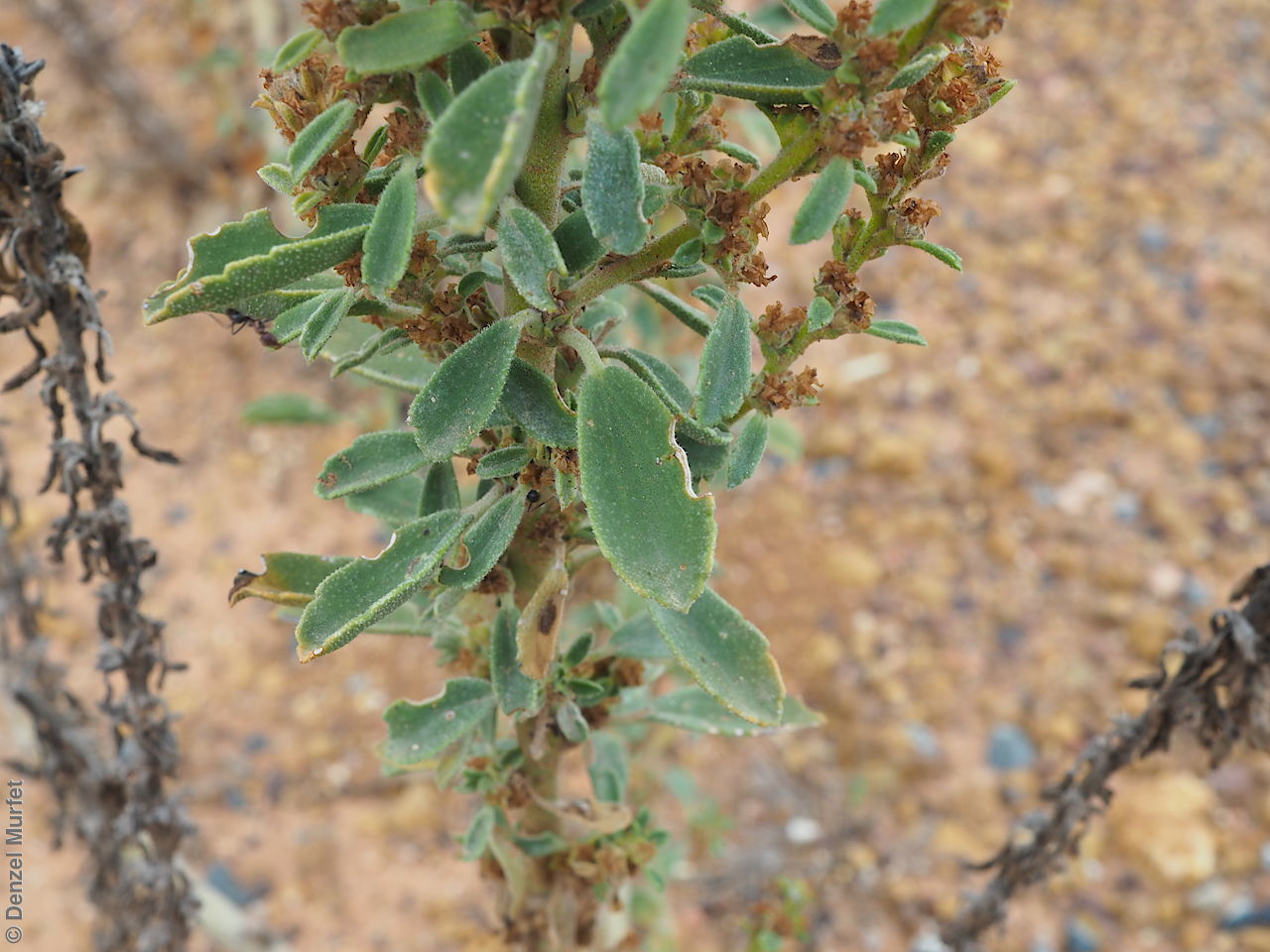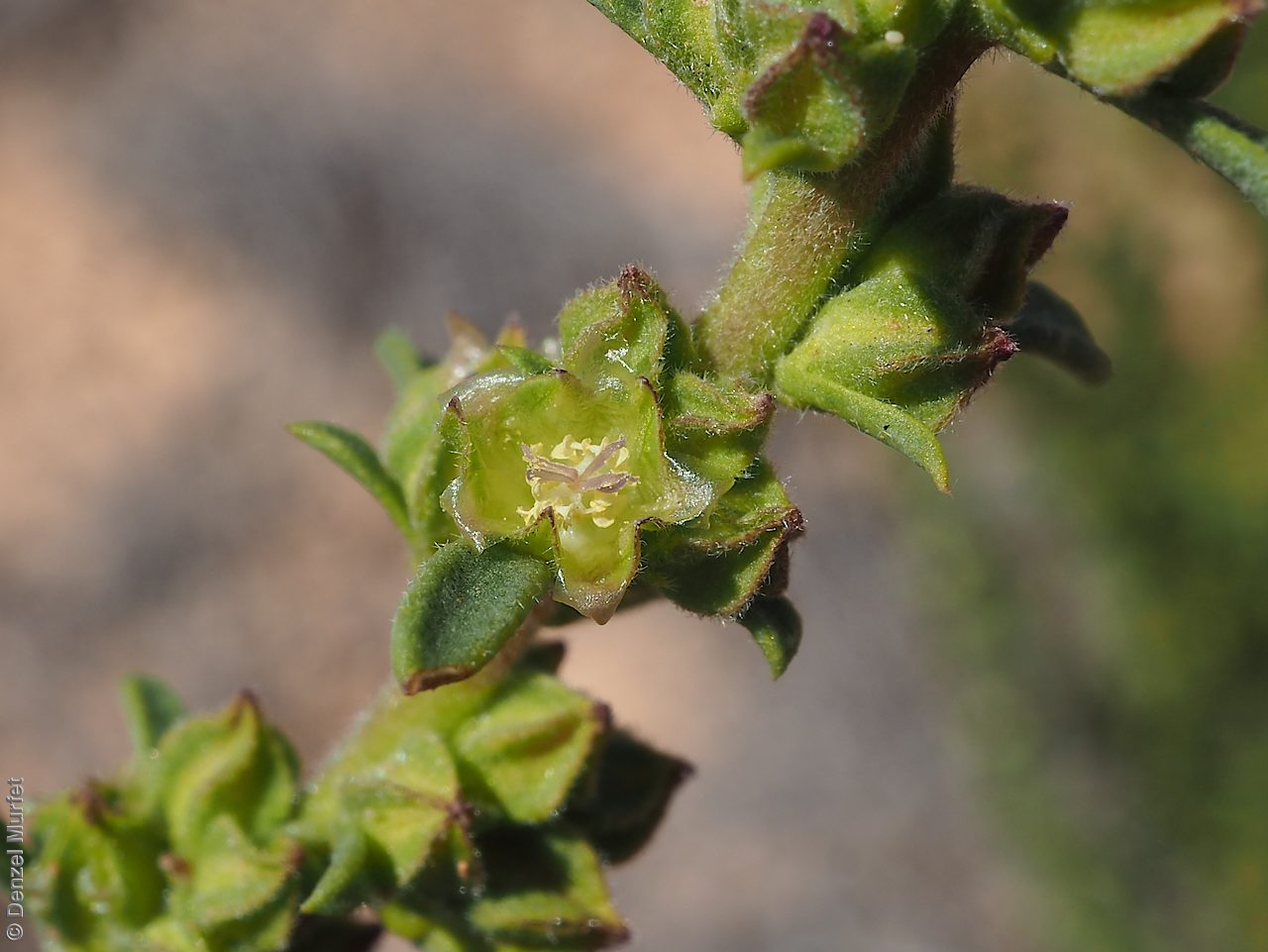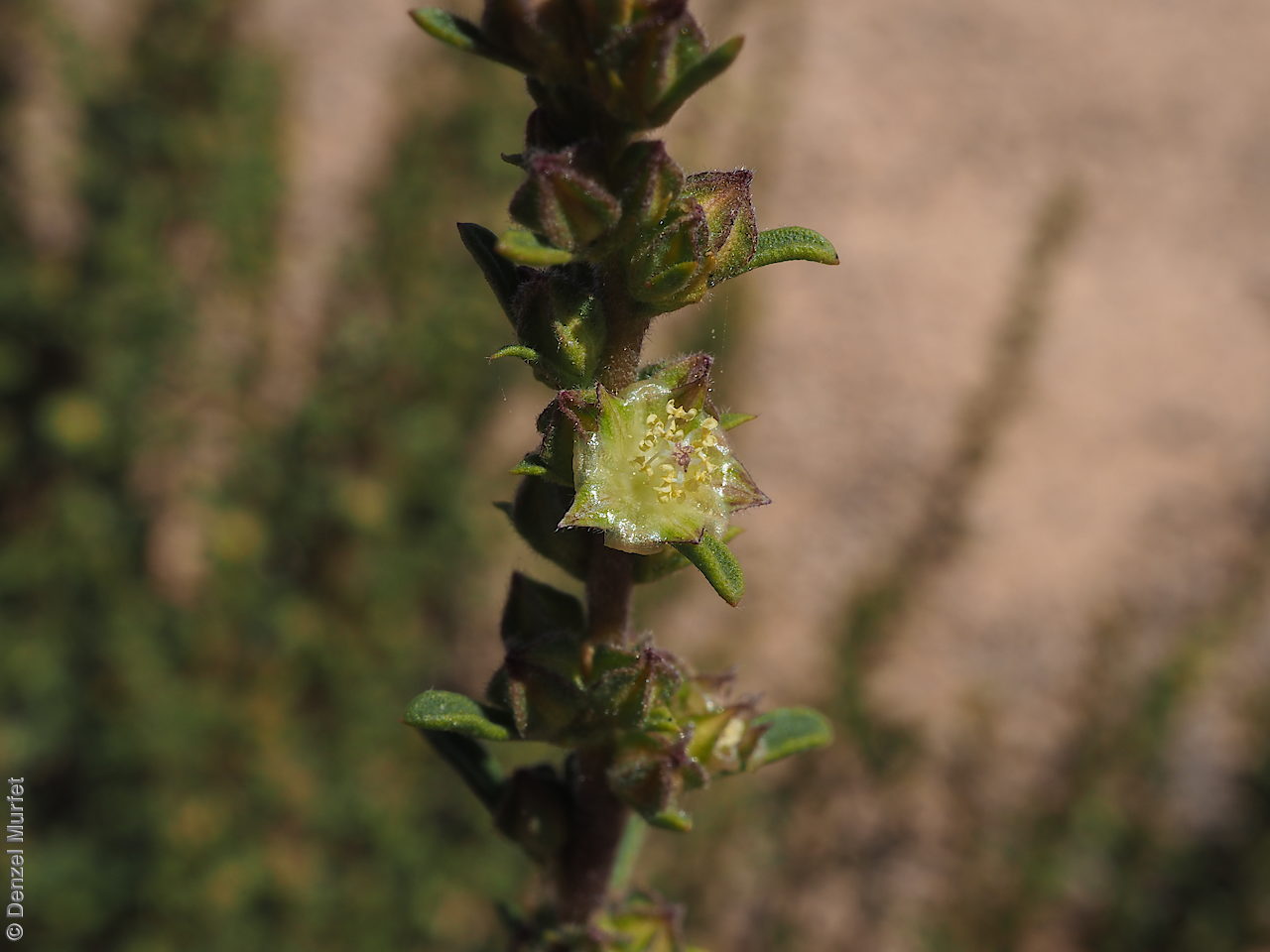Clustered Lawrencia,
Small Golden-spike
Display all 22 images






















Regional Species Conservation Assessments per IBRA subregion.


Least concern
Near threatened
Rare
Vulnerable
Endangered
Critically endangered
Extinct
Data deficient
Adelaide
Arkaroola
Ceduna
Coober Pedy
Hawker
Innamincka
Marla
Marree
Mount Gambier
Oodnadatta
Renmark
Wudinna
Keith
Yunta
Display IBRA region text
| Bridgewater (NCP01) | Naracoorte Coastal Plain | Rare (IUCN: RA d(ii)) [unusual] |
| Tintinara (NCP04) | | Least Concern |
| Kangaroo Island (KAN01) | Kanmantoo | Vulnerable (IUCN: VU D2) [checked P Lang: could be EN D] |
| Fleurieu (KAN02) | | Vulnerable (IUCN: VU D2) [appears after fire; in Monarto area] |
| Olary Spur (FLB03) | Flinders Lofty Block | Rare (IUCN: RA d(i,ii)) |
| Southern Flinders (FLB04) | | Vulnerable (IUCN: VU B2ab(i,ii,iii)c(iii)) (Probable Decline) |
| Northern Flinders (FLB05) | | Least Concern [taxon now has 3 ssp] |
| Central Flinders (FLB06) | | Near Threatened [taxon now has 3 ssp] |
| Southern Yorke (EYB01) | Eyre Yorke Block | Vulnerable (IUCN: VU B2ab(i,ii,iii)c(iii)) (Probable Decline) |
| St Vincent (EYB02) | | Vulnerable (IUCN: VU B2ab(i,ii,iii)c(iii)) (Probable Decline) |
| Eyre Hills (EYB03) | | Least Concern |
| Talia (EYB04) | | Near Threatened (Probable Decline) |
| Eyre Mallee (EYB05) | | Least Concern |
| South Olary Plain (MDD01) | Murray Darling Depression | Least Concern [undercollected] |
| Murray Mallee (MDD02) | | Near Threatened |
| Murray Lakes and Coorong (MDD03) | | Rare (IUCN: RA d(ii)) |
| Braemer (MDD07) | | Rare (IUCN: RA d(i,ii)) |
| Murray Scroll Belt (RIV06) | Riverina | Rare (IUCN: RA d(i,ii)) |
| Myall Plains (GAW01) | Gawler | Near Threatened |
| Gawler Volcanics (GAW02) | | Least Concern |
| Gawler Lakes (GAW03) | | Least Concern |
| Arcoona Plateau (GAW04) | | Least Concern |
| Kingoonya (GAW05) | | Least Concern |
| Torrens (GAW06) | | Least Concern [taxon now has 3 ssp] |
| Roxby (GAW07) | | Least Concern [taxon now has 3 ssp] |
| Commonwealth Hill (GAW08) | | Least Concern [taxon now has 3 ssp] |
| Maralinga (GVD03) | Great Victoria Desert | Least Concern |
| Kintore (GVD04) | | Near Threatened [taxon now has 3 ssp] |
| Tallaringa (GVD05) | | Least Concern [taxon now has 3 ssp] |
| Yellabinna (GVD06) | | Least Concern |
| Nullarbor Plain (NUL02) | Nullarbor | Least Concern |
| Yalata (NUL03) | | Least Concern |
| Barrier Range (BHC01) | Broken Hill Complex | Rare (IUCN: RA d(i,ii)) |
| Barrier Range Outwash (BHC04) | | Rare (IUCN: RA d(i,ii)) |
| Curnamona (BHC06) | | Rare (IUCN: RA d(i,ii)) |
| Simpson Desert (SSD02) | Simpson Strzelecki Dunefields | Near Threatened [taxon now has 3 ssp] |
| Dieri (SSD03) | | Least Concern [taxon now has 3 ssp] |
| Warriner (SSD04) | | Near Threatened [taxon now has 3 ssp] |
| Strzelecki Desert (SSD05) | | Least Concern [taxon now has 3 ssp] |
| Breakaways (STP01) | Stony Plains | Least Concern [taxon now has 3 ssp] |
| Oodnadatta (STP02) | | Least Concern [taxon now has 3 ssp] |
| Murnpeowie (STP03) | | Least Concern [taxon now has 3 ssp] |
| Macumba (STP05) | | Near Threatened [taxon now has 3 ssp] |
| Witjira (STP06) | | Least Concern [taxon now has 3 ssp] |
| Baltana (STP07) | | Least Concern [taxon now has 3 ssp] |
| Coongie (CHC06) | Channel Country | Least Concern [taxon now has 3 ssp] |
| Mann-Musgrave Block (CER01) | Central Ranges | Near Threatened [taxon now has 3 ssp] |
| Tieyon (FIN03) | Finke | Near Threatened [taxon now has 3 ssp] |
| 2 of 4 subregions | Naracoorte Coastal Plain | Least Concern , Rare |
| 2 of 2 subregions | Kanmantoo | Vulnerable |
| 4 of 6 subregions | Flinders Lofty Block | Least Concern , Near Threatened , Rare , Vulnerable |
| 5 of 5 subregions | Eyre Yorke Block | Least Concern , Near Threatened , Vulnerable |
| 4 of 6 subregions | Murray Darling Depression | Least Concern , Near Threatened , Rare |
| Murray Scroll Belt (RIV06) | Riverina | Rare (IUCN: RA d(i,ii)) |
| 8 of 8 subregions | Gawler | Least Concern , Near Threatened |
| 4 of 4 subregions | Great Victoria Desert | Least Concern , Near Threatened |
| 2 of 3 subregions | Nullarbor | Least Concern |
| 3 of 4 subregions | Broken Hill Complex | Rare |
| 4 of 4 subregions | Simpson Strzelecki Dunefields | Least Concern , Near Threatened |
| 6 of 7 subregions | Stony Plains | Least Concern , Near Threatened |
| Coongie (CHC06) | Channel Country | Least Concern [taxon now has 3 ssp] |
| Mann-Musgrave Block (CER01) | Central Ranges | Near Threatened [taxon now has 3 ssp] |
| Tieyon (FIN03) | Finke | Near Threatened [taxon now has 3 ssp] |
Botanical art
Kath Alcock paintings: 5
Prior names
Plagianthus spicatus var. pubescens
Plagianthus glomeratus
Common names
Clustered Lawrencia
Small Golden-spike
Etymology
Lawrencia, named after Robert Williams Lawrence (1807-33), an English-born botanist and plant collector in Tasmania. Glomerata from the Latin 'glomeratus', meaning heap or forming a ball, referring to the dense flower clusters.
Distribution and status
Found across all of South Australia growing in saline or sub-saline flats, depressions and around salt lakes, usually associated with mallee or samphire communities. Also found in all mainland States. Native. Common in South Australia. Common in the other States.
Herbarium regions: North Western, Lake Eyre, Nullarbor, Gairdner-Torrens, Flinders Ranges, Eastern, Eyre Peninsula, Murray, Yorke Peninsula, Southern Lofty, Kangaroo Island, South Eastern, Green Adelaide
AVH map: SA distribution map (external link)
Plant description
Short-lived perennial sub-shrub to 50 cm high, with several soft-woody procumbent to erect branches from the base. Lower leaves obovate to cuneate, to 40 mm long and 18 mm wide, on a long stalk; margins crenate to serrate; surfaces densely hairy. Upper leaves stalkless; smaller and relatively narrower than lower leaves; margins entire or commonly 3-toothed at apex. Inflorescence bisexual; solitary or few in axils of floral leaves with greenish, white or yellow flowers. Flowering between July and August. Fruits are glabrous fruit consisting of a number of seed segments with a pointed apex and with the inner walls finely reticulate. Seeds are brown wedge-shaped seed to 2 mm long and 2 mm wide. Seed embryo type is folded.
Seed collection and propagation
Collect seeds between September and November. Collect mature fruits, those that are turning a brown colour and with the segments containing dark hard seeds. Place the fruits in a tray and leave to dry for one to two weeks. Then rub the fruits gently by hand to separate the seed segments. Use a sieve to separate the unwanted material. Store the seeds with a desiccant such as dried silica beads or dry rice, in an air tight container in a cool and dry place. From two collections, the seed viability was average to high, ranging from 65% to 100%. This species has physical dormancy that needs to be overcome for the seed to germinate (e.g. nicking or softening the seed coat).
| Location | No. of seeds
(weight grams) | Number
of plants | Date
collected | Collection number
Collection location | Date
stored | % Viability | Storage
temperature | BGA
MSB | 14,500 (67.9 g)
14,500 (67.9 g) | 35 | 23-Oct-2004 | MOL4584
Gairdner-Torrens | 28-Mar-2006 | 65% | -18°C |
BGA
MSB | 5,000 (4.2 g)
5,000 (4.2 g) | 50 | 7-Nov-2005 | MKJ96
Gairdner-Torrens | 7-Aug-2006 | 100% | -18°C |
| BGA | 36,400 (25.49 g) | 50 | 21-Nov-2007 | RJB74450
South Eastern | 19-Sep-2008 | 100% | -18°C |
Location: BGA — the seeds are stored at the Adelaide Botanic Gardens, MSB — the seeds are stored at the Millennium Seed Bank, Kew, England.
Number of plants: This is the number of plants from which the seeds were collected.
Collection location: The Herbarium of South Australia's region name.
% Viability: Percentage of filled healthy seeds determined by a cut test or x-ray.























